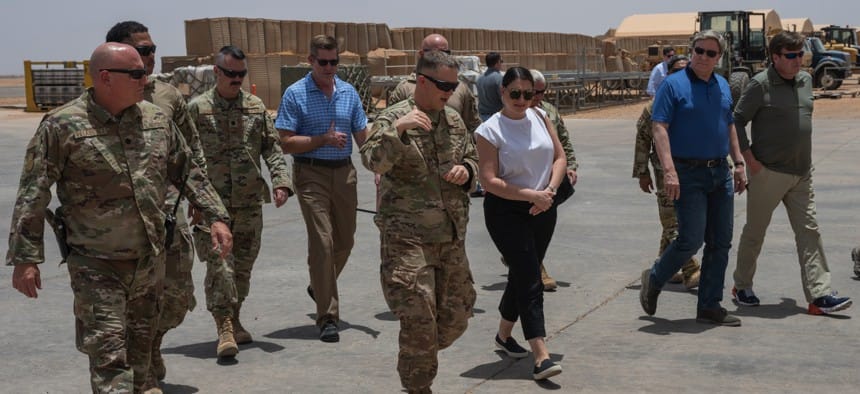The U.S. is considering alternative countries to host its drone base for counter-terrorism missions in Niger after a coup in the West African country overthrew a democratically elected president.
“There are several locations I’ll say that we’re looking at, but nothing’s firmed up. We have talked to some countries about it,” said Gen. James Hecker, commander of U.S. Air Forces in Europe and Africa.
However, the Air Force is waiting to see the results of U.S.-Niger diplomacy talks as the “diplomatic solution is going pretty well right now,” Hecker told reporters Wednesday at the Air & Space Forces Association’s annual Air, Space & Cyber conference.
“Our tactic was to kind of let the State Department do their thing and see what we can do diplomatically here because we don’t want this thing to turn into a shooting war,” Hecker said.
The Biden administration has yet to declare the removal of President Mohamed Bazoum a coup. Doing so would end military assistance to the country and have major ramifications for U.S. counter-terrorism operations in Africa.
After the July coup, the U.S. halted drone operations but within the last “couple of weeks” the Air Force has been able to restart operations, Hecker said.
“We are now doing, I wouldn’t say 100 percent of the missions that we were doing before, but we’re doing a large amount of the missions that we were doing before,” the general said.
But the missions aren’t gathering as much data as they used to, Hecker said, because the U.S. had to move some equipment and personnel from Air Base 101, near the capital of Niamey, to Air Base 201, a base farther away from the coup—and farther away from targets that need to be surveyed.
“You’re doing the mission, but you’re not getting as much data because you’re not overhead for as long just because of the gas it takes to get there and back,” Hecker said.
Hecker also discussed ongoing efforts in Ukraine, as he commands U.S. Air Forces in both Africa and Europe. The general underscored the importance of air superiority during conflict—something neither Russia nor Ukraine has been able to gain during the war.
“Without that, what they started out doing was throwing 155 [mm] rounds back and forth at one another and what goes with that is mass casualties. Cities just turned into rubble. You have collateral damage, such as schools, hospitals, and those kinds of things, some on purpose, some not. And that’s a war that I don’t think any one of us wants to fight,” Hecker said.
The general outlined a few ways to gain air superiority, the most important being able to conduct counter anti-access and area-denial missions, or counter-A2/AD.
“It’s really a joint effort to get rid of the very sophisticated integrated air and missile defense system that Russia has, so that’s what we’ve been concentrating on,” Hecker said. “We’re putting in place a plan to be able to do that and hopefully do that at mass.”
Another priority for NATO is building a strong integrated air missile defense system, which has been “kind of put on the back burner” over the last 30 years, Hecker said.
The war has also boosted F-35 sales, Hecker said. Since the invasion, many nations now want to buy F-35s, Hecker said, and the U.S. estimates over 600 F-35s will be operating in Europe in less than a decade.
NATO members are also sharing more information, he said. Before the war, allies shared 30 “points of interest” every month. Now that number is up to 3,000.
“All the extra F-35s and information-sharing that we’re doing—thank you, Mr. Putin. That was probably something he wasn’t counting on when he kicked this thing off,” Hecker said.
Ukrainians are also validating the U.S. Air Force’s concept of Agile Combat Employment, he said, and underscoring the importance of resilient communications nodes that allow forces to operate from distributed locations.




